Annapurna Sunrise Views Trek Cost
This Annapurna Sunrise Views Trekking package follows a 5- to 6-day itinerary. The cost of the Annapurna Sunrise Views Trek can be kept within budget due to the trek's short duration, accessible location, and lower altitude.
Anyway, the cost of a 5-6 days Annapurna Sunrise Views Trek can vary depending on several factors such as the services you need, trekking duration, trekking route, group size, type of accommodation, guide/porter services, starting and ending point and additional activities. Prices start from USD 350 per person and can go up to USD 650 per person for a full package from arrival to departure in Kathmandu. Our pricing is transparent; clearly stating what is included and excluded.
Typically, the total cost includes accommodation, transportation, food, trekking permits, guide, and porter services. However, if you require luxury facilities along the trek, there will be additional costs.
We also design tailor-made itineraries and customizable trekking packages according to trekkers' requirements for budget, itinerary, and services where possible. However, we recommend choosing our offered 5- to 6-day Annapurna Sunrise View Trek Itinerary Package to avoid the hassle of breaking down costs.
Food on Annapurna Sunrise View Trek
Along the Annapurna Sunrise View Trek, there are tea houses, lodges, restaurants, and tea shops that provide the food to trekkers. Every place generally has a similar food menu, offering a variety of dishes, but prices are different due to its elevations. You can choose from a range of food items on the menu. The cooks at these establishments are usually trained, but the taste of the food may be different from what you're used to in the West.
Most of the lodges in the region have gardens where they grow fresh vegetables, which they use to prepare meals for their guests. This ensures that the food is fresh and locally sourced. So, normally you will find a variety of food options at the tea houses or lodges along the trail.
Breakfast:
- Tibetan bread (fried bread served with honey or jam)
- Pancakes
- Oatmeal or porridge
- Eggs (boiled, fried, scrambled)
- Muesli with yogurt, or cornflakes
Lunch and Dinner:
- Dal Bhat (a traditional Nepali meal consisting of rice, lentil soup, vegetables, and pickles)
- Fried rice or noodles
- Potatoes dishes
- Pasta dishes
- Momos (dumplings filled with vegetables or meat)
- Pizza
- Soups (such as vegetable, chicken, or noodle soup)
- Curry dishes (vegetable, chicken, or meat curry with rice or roti)
Snacks and Desserts
- French fries
- Popcorn
- Spring rolls
- Potato or vegetable pakoras
- Fresh fruit (seasonal fruits like bananas, apples, oranges)
- Rice Pudding, Apple pie, fruits, snicker/ mars bar, cake, etc.
Drinks:
- Tea (black, milk, ginger, lemon, mint)
- Coffee
- Hot chocolate
- Soft drinks like Juice and cola
- Bottled water
Accommodation in Annapurna Sunrise View Trek
There are many accommodations and restaurants along the Annapurna Sunrise View trekking trail. The route starts and ends at Nayapul, passing through villages such as Hile, Ulleri, Banthanti, Ghorepani, Tadapani, and Ghandruk. These villages are famous for lodging, and new buildings are added every year to accommodate travelers. Therefore, finding comfortable accommodation along the route is easy. Almost all tea houses strive to provide the best service to travelers.
Typically, lodges offer private rooms with two beds and shared indoor bathrooms. However, if you prefer luxury accommodations, some tea houses provide upgraded facilities. Luxury accommodations are limited and more expensive than standard ones, as they include private bathrooms with hot showers. You can choose the best option based on your budget for Annapurna Sunrise View Trek
Annapurna Sunrise View Trek Permit & Cost
The Annapurna Sunrise View Trek route is situated inside the Annapurna Conservation Area, so you need to purchase an ACAP (Annapurna Conservation Area Project) permit. Another required permit is the TIMS (Trekkers Information Management System) card. The TIMS card is for your safety and security, as it helps keep track of trekkers' whereabouts in the region. Both permits are mandatory for the Annapurna Sunrise View Trek.
These permits obtained from a reputable trekking company through the Tourism Board (Bhrikuti Mandap). You or your guide must carry these permits throughout the trek, as you need to show them and register at every check post along the trail. If you attempt to trek without these permits, you will need to purchase them on-site at double the cost (as a penalty) or you may be forced to turn back.
TIMS (Trekkers Information Management System) Card
- It Cost US$ 20 per person/ per Trek
Annapurna Conservation Area Project (ACAP) Entrance Fees
- It cost US$ 30 only per person/ per trek
Best Season for Annapurna Sunrise View Trek
Generally, the best season for the Annapurna Sunrise Trek is during the spring (March to May) and autumn (September to November). These periods offer the most favorable weather conditions, clear skies, and stunning views of the surrounding landscape and the panoramic views of the Annapurna and Dhaulagiri mountain ranges. It means, the weather is perfect for trekking. Winter is also a recommended time due to its not very high elevation and the mountains are covered by snow, providing some of the best views.
Even though the period from the beginning of September to the end of May is an ideal time for the Annapurna Sunrise View Trek, it is possible to do the trek throughout the entire year, including summer and winter. So summer is the best time for nature lovers and winter is the best time for mountain views in the Annapurna Sunrise View Trek. However, it requires proper preparation, suitable gear for both winter and summer, and flexibility to handle cold weather, rainy conditions, and shorter daylight hours.
Annapurna Sunrise View Trek Difficulty
The Annapurna Sunrise View Trek is considered easy to moderate in difficulty. The walking distances are manageable, taking you through farmland, local villages, and lush rainforests, with a gradual increase in altitude. The trek starts at 1,025 meters in Nayapul or Birethanti, and the highest point is Poon Hill at 3,210 meters, before ending back at the starting point after completing the circular route. While the trekking trail can be narrow and includes some steep slopes, particularly before and after Poon Hill, it is generally not too difficult. You will need to walk 5 to 8 hours a day.
The risk of altitude sickness is low on this trek due to the abundance of oxygen and greenery. A strong mindset and determination are key to successfully completing the trek. The Annapurna Sunrise Trek is physically possible for all levels of travelers, but some short hiking training beforehand is beneficial.
If you plan to trek during peak season, it is advisable to book accommodations in advance, as there may not be enough available, making it difficult to find good lodging. If you trek in winter, be prepared with warm clothes as the weather can be extremely cold. During the monsoon season, the trail can become slippery and tough due to the rainforest terrain.
It is recommended to book this Annapurna Sunrise View trip with a reputable trekking agency. They will provide experienced guides and accurate information, enhancing your trekking experience and making it more enjoyable, hassle-free, and memorable.
Communication in the Annapurna Region
Annapurna region is popular trekking destination In Nepal. There are good mobile network services and internet services in the whole Annapurna region trekking area but not few places such as Nar Phu Valley, Tilicho Lake and Saribung Pass trekking. The internet service will be available whole Region but tea-houses and lodges provide internet with some extra charge. If you have not Nepali SIM card for communication with your family and not use the internet service, our guide help to you for pass the massage because always our guide have cellular phone and he contact to Kathmandu trekking office about to know the trek and your health condition as well as we help any kinds of problem during the trek.
Hence, travelling is important things in life so we make sure you about safe and healthy during the trekking in Nepal. Nowadays, you can get the local SIM card in Kathmandu airport after arrival to use the 3g and 4g internet service because most of the trekking routes in Nepal have Mobile Network service. If you need Nepali SIM, we can provide to you for your trekking but you have to tell us before leave the trekking.
Acclimatization:
High altitude sickness is common problem in the high Himalayan area when you go as higher elevation. It is appears very quickly but symptoms are preventable. If you have previous high altitude trekking experience, it might be best but if not trek in above three thousand meters high you need to prevention of the high altitude sickness. You need a extra suitable acclimatization days to complete the trip and Walk slowly, drink plenty of water, don’t drink alcohol, go higher and sleep low elevation as well as spend 2 nights on every 500 meters above than 3500 meters heights are prevent the altitude sickness during the trekking in Nepal. All our trekking itineraries are flexible with acclimatization days and first priority for your health and safety to complete the trek without any problem. We provide you basic medicine to support for emergency rescue, if situation gets worse.
Hence, every day you have inform to your Guide or Leader about your health condition and he will response to decide whether and your overall health condition to continue the trip or return back.
Tipping information
The Guide, porter, driver and all workers who are working in tourism filed, they except some tips during your Tour Trekking and others activities in Nepal. Tipping is judgment of workers from travelers and workers offers the tips end of the trek. Travelers tips 10% of their payable amount but you can give to them depend on their services.
Hence, it is important to High Pass Adventure working team who take care to you all the time during the visiting in Nepal, motivated with outstanding service and offer inspiring trip in a lifetime experience.
Trip extension
If you have extra time after complete the trek, you can do different activities or different short trek in Nepal. We have many short tour packages and adventure activities such as Chitwan National park and Bardiya National Park for Jungle safari tours. You can visit Pokhara city, Nagarkot Hiking, Dhampus hiking or day Rafting trip in Trisuli River.
Adventure activities are like paragliding, canoeing, Ultra light flight, Bungee Jump and Mountain Biking. These all package are extra activities as optional tours and not included in your package cost. If you will do these activities after the trip with us, we arrange at a reasonable cost and we give to you good discount.
Trekking Gear List
Travel equipment are necessary to pack before you travel. We hope it is too much to carry from your home to others country but some are the necessary equipment can be hired or buy in Kathmandu around Thamel. These general equipment are for all seasons while on trekking in Nepal, but may be different as per the different season and duration of trekking routes on your chosen trip.
Documents:
- Passport and 4 passport size photos
- Travel insurance details (in case an emergency evacuation if needed)
- Boarding passes for flights
- Driver’s license (if needed)
- Cash USD
- Credit/Debit Card (Ensure you have $500 on your card incase an emergency helicopter evacuation is needed)
Sleeping:
- Sleeping bag (Comfort rating -15 Celsius recommended)
- Sleeping bag liner (Optional)
Footwear:
- Trekking boots: one pair lightweight
- Sandals for city and tea house footwear
- Shoes for the plane and tea houses (Optional)
- Gaiters for hiking in winter to the base camp
- Thin, lightweight inner socks
- Thick, warm wool hiking socks
Clothing for Body:
Please make sure that you have non-cotton clothing for trekking:
- Base-layer t-shirts (e.g. running t-shirts)
- Fleece/Windproof jacket
- Waterproof jacket
- Down jacket for warmth
- Travel clothes and City Wear
- Underwear
- Base-layer trousers (optional)
- Waterproof trousers
- Trekking trousers
- Trekking shorts (Optional)
- Gloves and wool hat
- bandanna or scarf
Health Requirements (Basic First Aid Kit)
- First-aid kit; should contain lip salve, Aspirin, Band Aids, anti-histamine, Imodium or similar tablets for mild cases of diarrhea
- Re-hydration powder, extra prescription drugs you may be taking if any particular
- Wet wipes for cleaning can be purchased in Kathmandu
Others:
- Sunglasses and Sun cream
- Towel
- Book (reading and writing materials)
- MP-3 /Music, headphones and ear plug (who know some people on group are snoring) as optional.
- Travel wash
- Hand sanitizer, wet wipes
- A day bag: 35 liters
- A duffel or rucksack with straps to go over your back (Max 12 kg of weight for porters to carry)
- Dry Liner or Dry Bag
- Water bottle/thermos/ camel bag: At least 2 L. Nalgen bottles best.
General Toiletries
- Toilet papers/ tissue
- Contact lenses, Glasses (if needed)
- 1 medium sized quick drying towel
- Tooth brush/paste (preferably biodegradable)
- Multipurpose soaps (preferably biodegradable)
- Large plastic bags – for keeping items dry inside your kit / duffel bag
- Travel game i.e. chess, backgammon, and scrabble. (for luxuries)
- Binoculars (for luxuries)
- Trail Map/Guide book (if you are alone)


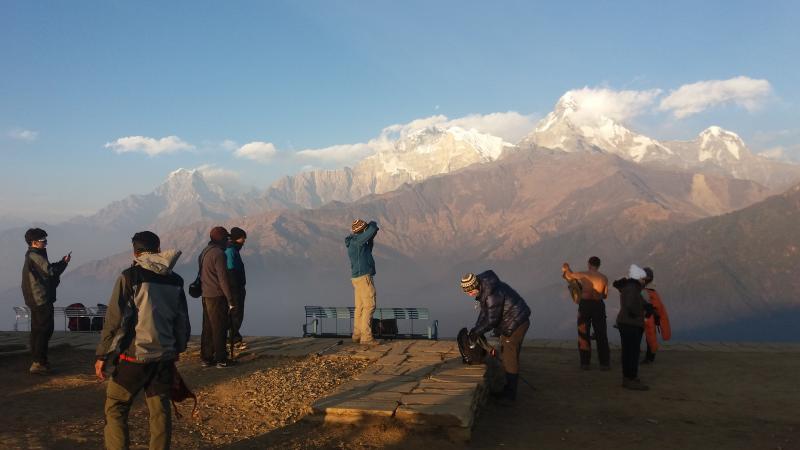

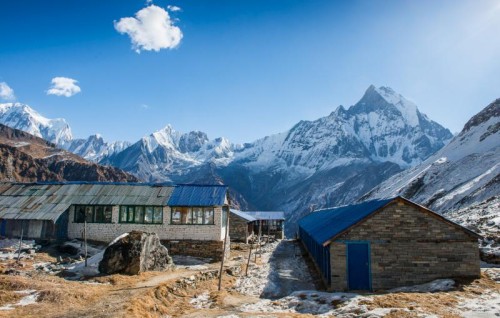


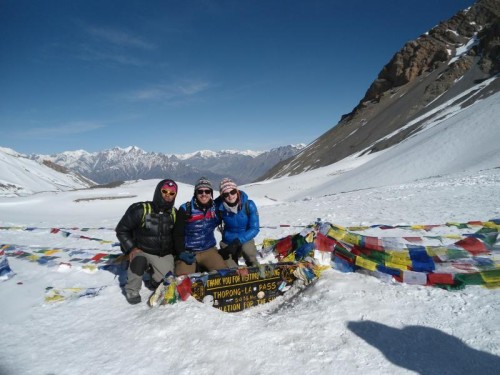
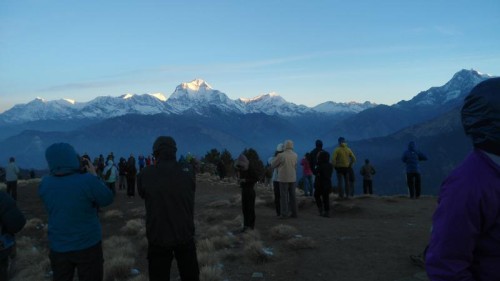
 USD 400
USD 400.jpg)
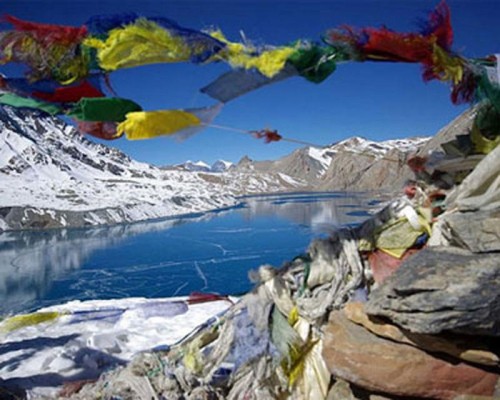
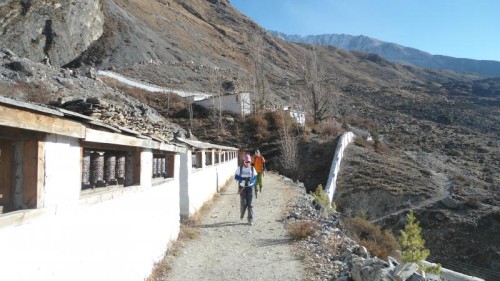
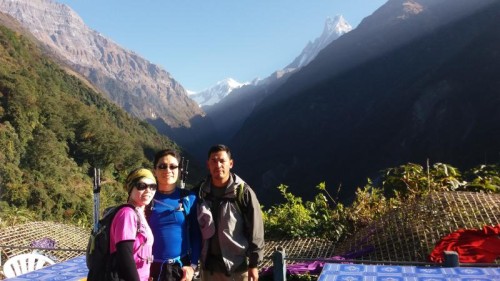
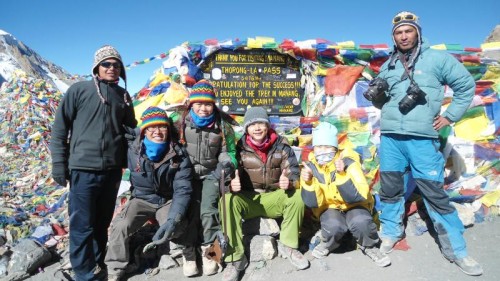
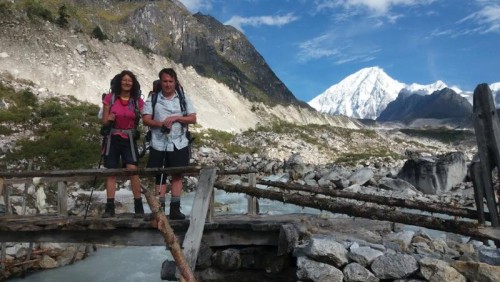

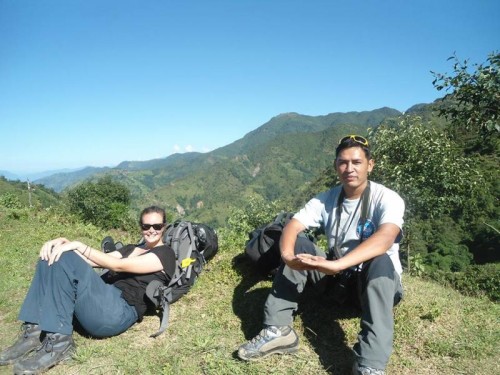
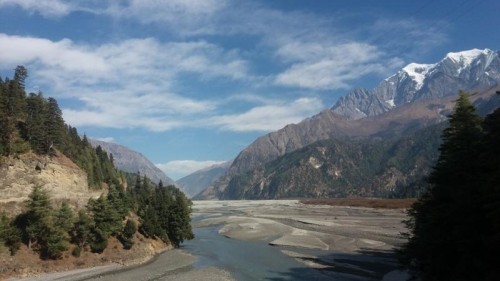
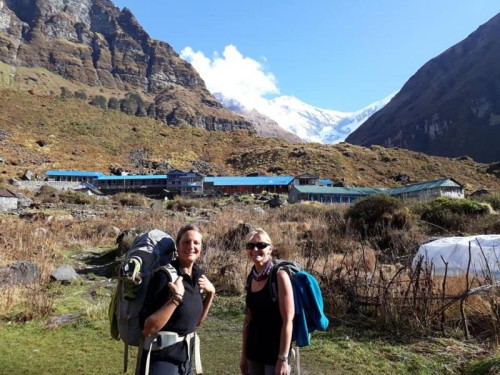
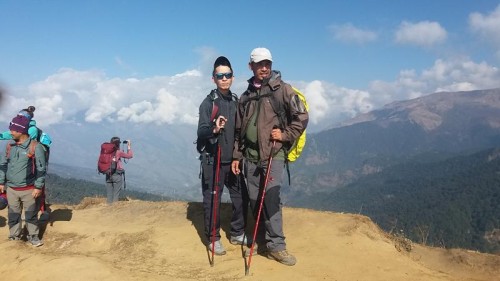
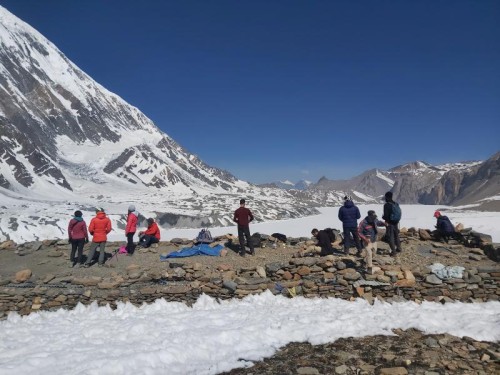

Miss jan
Australia
Magical Himalayas !!!
18th June, 2023
Our professional High Pass Adventure guide customized our Annapurna Sunrise trek 5 Days to our abilities allowing us to achieve our goals. He always showed and practiced great leadership and patience. His knowledge of the route was superb. We had a lot of fun and were immersed in the local culture. I highly recommend the team at High Pass Adventures.
Miss J, Australia